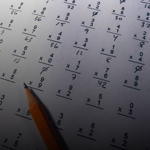Preview this deck
DAG \(G\) is a causal Bayesian network compatible with \(\bm{P*}\) \(\iff\) 3 conditions
Front
Active users
8
All-time users
11
Favorites
0
Last updated
5 years ago
Date created
Aug 9, 2020
Cards (12)
Chapter 1
(8 cards)
DAG \(G\) is a causal Bayesian network compatible with \(\bm{P*}\) \(\iff\) 3 conditions
\(\forall P_x \in P_*\)
- \(P_x(v)\) is Markov relative to \(G\);
- \(P_x(v_i) = 1\) \(\forall V_i \in X\) whenever \(v_i\) is consistent with \(X = x\);
- \(P_x(v_i | pa_i) = P(v_i | pa_i)\) \(\forall V_i \notin X\) whenever \(pa_i\) is consistent with \(X = x\), i.e., each \(P(v_i | pa_i)\) remains invariant to interventions not involving \(V_i\).
Probability function P is Markov relative to DAG G
P admits the factorization
$$P(x_1, \ldots, x_n) = \prod_{i=1}^n P(x_i | pa_i)$$
relative to G
Markovian model
Causal diagram is acyclic and error terms are jointly independent
3-step procedure to calculate counterfactuals
- Abduction: Update \(P(u)\) to obtain \(P(u|e)\)
- Action: Replace equations corresponding to \(X\) with \(X = x\)
- Prediction: Use modified model to compute \(P(Y = y)\)
Semi-Markovian model
Causal diagram is acyclic
Graphoid axioms
- Symmetry: \((X \perp \!\!\! \perp Y | Z) \implies (Y \perp \!\!\! \perp X | Z)\)
- Decomposition: \((X \perp \!\!\! \perp YW | Z) \implies (X \perp \!\!\! \perp Y | Z)\)
- Weak union: \((X \perp \!\!\! \perp YW | Z) \implies (X \perp \!\!\! \perp Y | ZW)\)
- Contraction: \((X \perp \!\!\! \perp Y | Z)\ \&\ (X \perp \!\!\! \perp W | ZY) \implies (X \perp \!\!\! \perp YW | Z)\)
- Intersection: \((X \perp \!\!\! \perp Y | ZW)\ \&\ (X \perp \!\!\! \perp W | ZY) \implies (X \perp \!\!\! \perp YW | Z)\)
Causal Bayesian network \(\implies\) 2 properties
- \(\forall i\\P(v_i | pa_i) = P_{pa_i}(v_i)\)
- \(\forall i, S \subseteq V\setminus\{V_i, PA_i\}\\P_{pa_i, s}(v_i) = P_{pa_i}(v_i)\)
Truncated factorization of causal Bayesian network
$$P_x(v) = \prod_{\{i | V_i \notin X \}} P(v_i | pa_i)$$
for all \(v\) consistent with \(x\)
Chapter 2
(4 cards)
do Calculus rule 3
Insertion/deletion of actions:
\(P(y | \hat{x}, \hat{z}, w) = P(y | \hat{x}, w)\), if \((Y \perp \!\!\! \perp Z | X, W)_{G_{\overline{X},\overline{Z(W)}}}\), where \(Z(W)\) is the set of \(Z\)-nodes that are not ancestors of any \(W\)-node in \(G_{\overline{X}}\)
do Calculus rule 2
Action/observation exchange:
\(P(y | \hat{x}, \hat{z}, w) = P(y | \hat{x}, z, w)\), if \((Y \perp \!\!\! \perp Z | X, W)_{G_{\overline{X}\underline{Z}}}\)
do Calculus rule 1
Insertion/deletion of observations:
\(P(y | \hat{x}, z, w) = P(y | \hat{x}, w)\), if \((Y \perp \!\!\! \perp Z | X, W)_{G_{\overline{X}}}\)
IC (inductive causation) algorithm
Input: \(\hat{P}(\bm{v})\)
Output: Pattern compatible with \(\hat{P}\)
- For each pair of variables \(a\) and \(b\) in \(V\), search for a set \(S_{ab}\) such that \((a \perp \!\!\! \perp b | S_{ab})\) holds in \(\hat{P}\). Construct an undirected graph \(G\) such that vertices \(a\) and \(b\) are connected with an edge \(\iff\) no set \(S_{ab}\) can be found.
- For each pair of nonadjacent variables \(a\) and \(b\) with a common neighbor \(c\), check if \(c \in S_{ab}\). If it is not, then add arrowheads \(a \rightarrow c \leftarrow b\).
- In the partially directed graph that results, orient as many of the undirected edges as possible subject to two conditions:
- Any alternative orientation would yield a new \(v\)-structure; or
- Any alternative orientation would yield a directed cycle.


